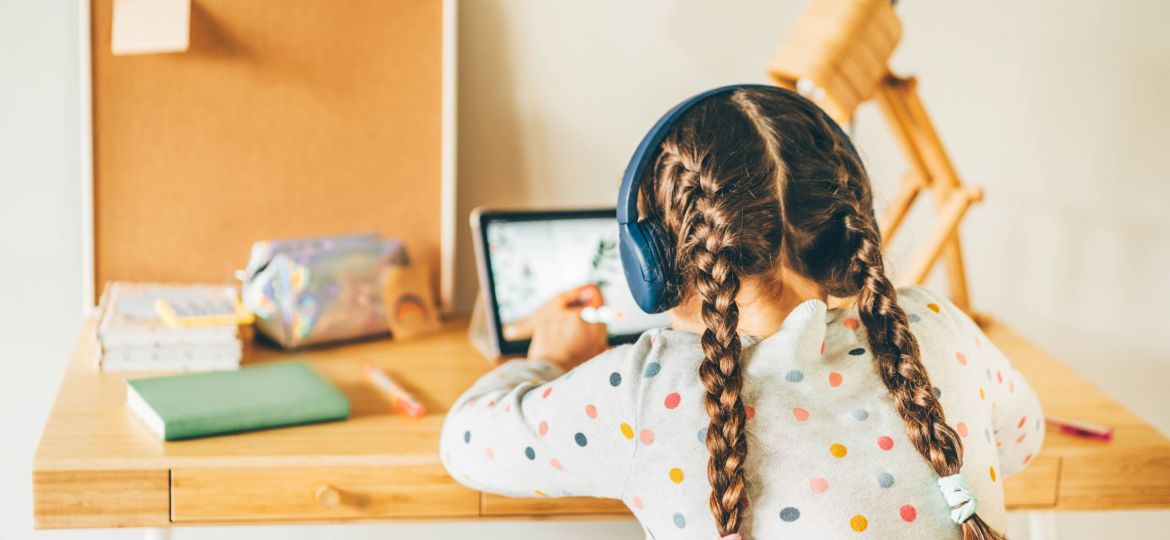
Reporting Child Abuse and Neglect in Remote Settings
by- Madeline Cadiz
With the pandemic winding down, various states have decided to open schools for in-person learning. However, districts in a few states have opted to have permanent online schooling (Gile, 2021). Moving forward, just as it is crucial in a classroom setting, noticing and reporting child abuse and neglect should be a priority through remote learning as well. During lockdown and after, schools shut down, forcing children to attend school remote from their homes. While this arrangement has benefited many children by providing them with a different approach to education, it is not the best for every child. Unfortunately, forcing a child in an abusive situation to stay home can provide more danger to the victim. This is why knowing what signs to look for and how to report child abuse and neglect is vital, especially in a remote setting.
A recent study by Rapoport et al. in New York observed the reporting of child maltreatment during the 2019 pandemic (2020). The results showed a significant decrease in the number of reports by various professionals and those required by law to report abuse and neglect, such as teachers and parents, most likely due to pediatricians and teachers facing limitations caused by the remote setting (Dutta, 2020; Rapoport et al., 2020). Further, as stated by Dr. Sanchari Sinha Dutta, challenges related to the pandemic “such as social isolation, loss of a job, financial hardship, parenting stress, increased alcohol/illicit drug consumption, and emotional distress can significantly increase the risk of family violence, including child abuse” (Dutta, 2020).
With so few opportunities for socialization, children may find it hard to speak up about their experience or even hint at their situation to others. Virtually, noticing signs of abuse is more difficult, but is still possible while knowing what to look for. Signs of child abuse and neglect look similar both remotely and in-person, such physical indications like bruising or a detrimental lack of hygiene. It is always important to look for signs within the child’s surroundings and behaviors. Is there yelling in the background? Does the child look stiff and seem unsafe in their environment? Is the child reluctant to leave the session? When noticing any of these signs, talking with the child may initially seem hard, but it doesn’t have to be.
The Department of Human Services in Philadelphia offered a guide of various questions aimed at helping those who worked with distressed parents and children during the pandemic. For children, these questions include if they are feeling safe in their household, if they feel worried, if there is anyone to care for them, how they feel in their household, and what their daily lives look like. These questions can help those find out more about the children they are working with and possibly let victims know that it’s okay to trust certain people and seek help.
If you or someone you know recognizes the various signs of child abuse, many resources can be used to report the incident. One of the first resources to consider is your state’s specific number for reporting abuse. The Child Welfare Information Gateway provides contact info for each state such as numbers, emails, and individual health services to aid any reports. Any children trying to find resources themselves can contact Childhelp’s National Child Abuse Hotline, which encourages children to tell their own story so the service can offer better help. The hotline allows texting, calling, and live chatting services for anyone to use according to their comfort level. They also provide a statewide map for reporters to find the correct Child Protection Services number, whether they are available 24/7, and if they offer online reporting. However, although these resources can be a great start to reporting abuse, if a child is in immediate danger of abuse or neglect, the best action is to call 911 for a quick response to the situation.
While most schools are going back to in-person learning, certain remote schools still allow children to stay at home. The importance of recognizing abuse and neglect should not be overshadowed by the limitations that online learning creates in connecting with children. Suspecting abuse is just as important in a remote setting as it is in-person, so it’s beneficial to know what to look for and questions that might help reporters gain more information and trust from the child. Even if children are afraid of speaking up, resources offer confidential services to help report their situation and provide other assistance. Anyone who is willing to listen may be their last hope. It may be easy to open and close a session online, but we should never forget the children who are behind the screens. They are children we all should look after and care for.
We at ARO are here to support you in your personal healing journey to complete well-being. We bring awareness and education to 13 different types of abuse including Narcissistic, Sexual, Physical, Psychological, Financial, Child, Self, Cyberbullying, Bullying, Spousal, Elderly, Isolation, and Workplace, and help others heal and find peace. Please support our efforts by going to GoARO.org to learn how you can make an impact on the Abuse Care Community.
References
Dutta, S. (2020, November 12). 250,000 Cases of Child Abuse or Neglect May Have Gone Unreported in U.S. COVID Pandemic. News-Medical. https://www.news-medical.net/news/20201112/250000-cases-of-child-abuse-or-neglect-may-have-gone-unreported-in-US-COVID-pandemic.aspx
Gile, M. (2021, August 12). 38 States Setting Up Permanent Virtual Schools After Pandemic Sparked Interest. Newsweek. https://www.newsweek.com/38-states-setting-permanent-virtual-schools-after-pandemic-sparked-interest-1618894#:~:text=Thirty%2Deight%20states%20have%20approved
Rapoport, E., Reiserta, H., Schoemana, E., & Adesman, A. (2020). Reporting of child maltreatment during the SARS-CoV-2 pandemic in New York City from March to May 2020. Child Abuse & Neglect, 116(2). https://doi.org/10.1016/j.chiabu.2020.104719
















